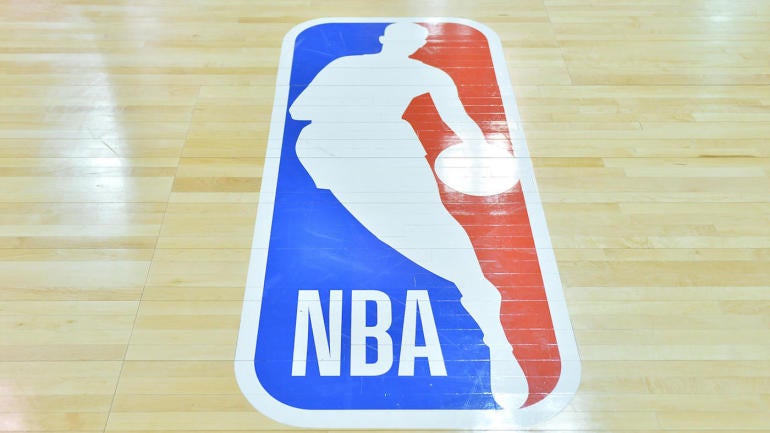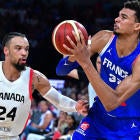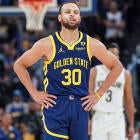
We may be more than four months overdue, but NBA free agency is nearly at hand. The league has crowned a champion, the NBA Draft is set for Wednesday night, and soon after, teams will be able to reshape their rosters by pursuing players no longer under contract with other teams. Even a depressed market, we are going to see the NBA's typical free-for-all over available talent play out in the coming days.
But how much can teams spend for these players? What mechanisms exist to help teams add them, and when can they actually use them? Here's everything you need to know about the NBA's upcoming free agent bonanza.
When does free agency start?
If we're being honest about tampering, free agency has already begun. If you're looking for the legal starting gun, though, it will come on Friday, Nov. 20 at 6 p.m. ET. That is when teams can legally contact players and their representatives and begin negotiating new contracts. Expect a deluge of early agreements at this point, but players can't actually sign quite yet.
Technically speaking, free agency isn't fully open until Sunday, Nov. 22 at 12:01 p.m. ET. That is when players can actually sign with new teams. In a normal offseason, that gap is far longer. It is referred to as the moratorium, and is the accounting period in which the league audits its finances and officially sets the salary cap. The league is using a moratorium to help simulate the typical circumstances of free agency, but it isn't needed for a practical standpoint. The league has already conducted its audit and set a salary cap for this season, albeit under somewhat unusual circumstances.
So what is the cap now? Will it grow over the next few years?
The salary cap for the 2020-21 season will be $109,140,000. That is the same cap that was used for the 2019-20 season. Usually, the cap is based on a projection of the following season's revenue. That projection would have lowered the cap by tens of millions of dollars, so the owners and players agreed to keep where it was for the 2020-21 season.
Things get a bit more complicated after that. For the next several seasons, the cap will rise by an undetermined amount. It could be as low as three percent or as high as 10 percent ... depending on how much revenue the league generates this season. Teams will be watching this figure very, very closely. A number of teams have spent years preparing for the summer of 2021, when Giannis Antetokounmpo leads a stellar free-agent class. The original projection for that summer was a $125 million cap. With these rules, it might not even reach $113 million. Teams expecting to pursue star free agents next will have to adjust their plans on the fly, which could lead to even more player movement now.
Having cap space now facilitates that movement. Very few teams actually do, though, and they will control the board in free agency.
Who has cap space?
As of this writing, only four teams are projected to have a significant amount of cap space:
- The Atlanta Hawks are projected to have around $44.3 million in space.
- The New York Knicks are projected to have around $42.4 million in space.
- The Detroit Pistons are projected to have around $30 million in space.
- The Charlotte Hornets are projected to have around $19.4 million in space.
Those numbers are fluid. They could change based on how these teams approach their own free agents, players with team options and possible draft-day trades. Barring something unforeseen, though, these are the four primary cap space teams of 2020.
There is, however, a very significant possible fifth team here. If the Miami Heat wanted to, they could create around $21.3 million in cap space. Offload the No. 20 pick, and suddenly, they get up to around $23 million. Here's the catch: Creating that cap space would mean renouncing their rights to all of their own free agents. At present, the Heat have the ability to go above the cap to retain Goran Dragic, Jae Crowder, Solomon Hill, Meyers Leonard and Derrick Jones Jr. Creating that space would deprive them of that ability. For that reason, it's probably unlikely the Heat take this route. It's hard to believe that they could get more value out of $21.3 million than Dragic, Crowder, Hill, Leonard and Jones. This option does exist, though, and if the Heat found a way to offload more salary, it might become even more tempting.
There is one other team that needs to be discussed. The Phoenix Suns were set to be on this list before the Chris Paul trade with around $18.9 million in space. They technically could have structured the Paul deal in a way that would have allowed them to keep that space. It just would've meant submitting the deal to the league office after spending it, as the Paul deal falls within the legally allowable salary range for an above-the-cap trade. However, the Suns chose not to do this, because like the Heat, it would have meant renouncing their own free agents. Instead of having that $18.9 million in space, they'll retain the rights to Dario Saric and Aron Baynes and have the ability to potentially use the non-taxpayer mid-level exception (which we will discuss in more depth later).
So we have four teams with real spending power. What kinds of free agents can they use it on?
The difference between restricted and unrestricted free agents
The majority of free agents are unrestricted. They can sign with whatever team they want, no questions asked. But a smaller subset of free agents are restricted. For the most part, these are young players coming off their first contracts. When a former first-round pick fails to extend his rookie scale deal, for instance, he becomes a restricted free agent after his fourth season.
A restricted free agent is free to negotiate with other teams, but he cannot sign a contract with them. Instead, he signs an offer sheet. After that sheet is signed, that player's original team can match the offer, allowing them to keep the player under the terms he agreed to with the other team. That player has no recourse. If the original team matches, he has to go back to that team. The catch is that the original team has to make that player a qualifying offer. That qualifying offer is a predetermined one-year salary based on a variety of factors that the team must offer to the player, who is free to sign that deal at any time if he is unhappy with the market. If a team revokes that qualifying offer, the player becomes an unrestricted free agent. If the player signs it, he is unrestricted after the next season.
Unrestricted free agents tend to have an easier time on the open market because, well, they aren't restricted. Teams don't have to worry about rivals matching. Outside of a few high-level exceptions, most of an offseason's highest-paid players are usually unrestricted. So how much can those players make?
How can that space be spent? What is the most -- and the least -- players can make?
The maximum salary a player can earn is based on how many years he's been in the league.
- Players with six years or less of service time can make up to 25 percent of the cap in the first year of a new deal. This season, that is $27,285,000.
- Players with 7-9 years of service time can make up to 30 percent of the cap in the first year of a new deal. This season, that is $32,742,000.
- Players with 10 or more years of service time can make up to 35 percent of the cap in the first year of a new deal. This season, that is $38,199,000.
There are some exceptions to this rule, but none that are likely to pertain to 2020 free agency. A player's original team can offer a five-year contract with raises up to eight percent annually. Every other team can offer up to four years with raises up to five percent annually.
On the other end of the spectrum, the minimum salary is also based on NBA experience, but to a much smaller degree. The minimum grows slightly with each year of experience a player has, up to 10, but from a cap perspective, the number that really matters is the minimum for players with two years of experience. That is the figure that counts on the team's books, no matter how much that player is actually getting paid, so long as the contract lasts only one season. The NBA does this to prevent teams from discriminating against older free agents to sign younger, cheaper ones. It also reimburses teams the cash difference between this figure and that player's actual salary. This season, that figure is $1,620,564.
Those maximum figures probably won't apply very often this offseason. Minimums? They will be critical to filling out rosters, and unlike the max, they are available to every team. That is just one of the many ways teams can add talent without having cap space.
My team doesn't have cap space. How can we still spend money?
Welcome to the wonderful world of cap exceptions. The league offers a number of methods of spending above the cap in free agency. Here is a quick overview of the exceptions teams can use to sign players away from other organizations:
- The non-taxpayer mid-level exception starts at $9,258,000, and can last up to four seasons. Any team without that much cap space is technically free to use this exception, but there's a catch: Doing so creates a hard cap. Once you've spent the non-taxpayer mid-level exception, you cannot exceed the apron ($138,928,000) for any reason. This exception can be given to a single player, or split among multiple players. Teams can only use one of the three possible mid-level exceptions.
- Some teams can't afford to hardcap themselves, so their alternative is the taxpayer mid-level exception. That starts at $5,718,000 and can last up to three years. It technically can be split amongst several players, but in most cases, it doesn't make sense to do so.
- Teams with cap space have a mid-level exception of their own. It starts at $4,767,000 and can last up to two years.
- The bi-annual exception is available to any team over the cap, but can be used only once every two years. The Dallas Mavericks, Memphis Grizzlies, Toronto Raptors and Detroit Pistons used it last season, so they can't use it this season. It starts at $3,623,000 and can last up to two years. Like the non-taxpayer mid-level exception, though, it creates a hard cap at the apron.
These are the primary exceptions teams can use to add players from other teams. When it comes to players they already have, teams use Bird rights. There are exceptions to all of this, but essentially, there are three tiers of Bird rights that each come with their own rules:
- Non-Bird rights relate to players who changed teams through free agency last season. Their incumbent teams can offer them 120 percent of their previous salary. If the player does not accept that, they can only be re-signed through cap space or exceptions.
- Early Bird rights relate to players who have not changed teams through free agency for two seasons. Their incumbent team can offer them 175 percent of their previous salary or 105 percent of the league's average salary, whatever is higher. Early Bird contracts must last at least two seasons.
- Full Bird rights relate to players who have not changed teams through free agency for three seasons. Their incumbent team can pay them anything up to the max, regardless of how much they actually deserve.
There is one other method of cap circumvention we need to cover, and it's going to be popular this offseason: sign-and-trades.
Did you say sign-and-trades? What are those?
It's right in the name. A team signs its own free agent, and then immediately trades that player to another team. They exist to give teams that don't have much cap space a chance to pursue free agents they couldn't otherwise afford, while allowing that player's original team to recoup some value for a player it planned to lose. This season, only four teams have significant cap space. Obviously, more than four teams want to add a meaningful free agent, so sign-and-trades should be plentiful this offseason.
In salary terms, they generally operate under the same rules as a normal trade. Teams must send a legally allowable amount of outgoing salary back (or have the capacity to absorb a player into space). Both teams and the player must agree to the deal. A team cannot renege on a sign-and-trade agreement in order to keep a player who wants to leave, as the sign and the trade are executed simultaneously.
There are three important cap caveats that need to be covered when it comes to sign-and-trades, though. Both make it significantly harder for teams to execute these moves.
- Like the non-taxpayer mid-level exception and the bi-annual exception, any team that acquires a player through a sign-and-trade is hard-capped at the apron. This only applies to the team acquiring the signed-and-traded player, not that player's original team, unless the teams agree to a double-sign-and-trade (which are exceedingly rare).
- Teams that use the taxpayer mid-level exception cannot acquire players through a sign-and-trade. This does not apply to the other versions of the mid-level exception.
- Signed-and-traded players are subject to an enormously complicated cap mechanism known as base year compensation. Essentially, it means that any player who receives a 20 percent raise on his new contract and is going to a team above the cap counts for a different salary to the team that is acquiring him than the team that is trading him, purely from the standpoint of making the trade legal. For the acquiring team, that player counts at his new salary. For the original team, he counts for either his previous salary, or 50 percent of his new salary, whichever is greater. The idea here is to make it harder for teams to sign players expressly for the purpose of trading them as salary ballast.
If teams can work within these parameters and agree to a deal both among themselves and the player, a sign-and-trade is possible. That wraps up the ways in which teams can add free agents. Not to be a buzzkill, but now we have to talk about why some teams are going to hesitate to sign players.
What is the luxury tax?
The luxury tax applies to teams that spend above a certain threshold. Those teams have to pay the league an amount that depends on how far above the line they go, and grows progressively more expensive the deeper into the tax that team spends (here is the exact formula). Half of that money goes to the teams that didn't pay the tax. Half of it is kept by the league. The line this season is the same as last season's: $132,627,000.
Obviously, most teams expected that number to be a bit higher this season, and they signed previous contracts based on those expectations. With that and the expected loss of revenue in mind, the league threw the most expensive teams a bone: In calculating how far above the tax line teams go this season, the league will reduce that number based on the percentage of revenue that the league loses relative to expectations. For example: Let's say a team spends $10 million above the tax line, and the league only gets 70 percent of its expected revenue. We'd reduce that $10 million down to $7 million -- 70 percent -- before calculating that team's payment. This will mean a great deal to the teams in tax territory right now.
Who are those teams? This list will expand, but at the moment, the Warriors, Nets, Celtics and 76ers are all above the line by a comfortable margin. Barring something unforeseen, they will pay the tax. Fortunately, none of them are currently in line to pay the repeater tax, which is extremely punitive. The Warriors in particular came extremely close to having to do so, and avoided it only through their deadline deal involving D'Angelo Russell. Having to pay it this season, with less revenue, would have been financially crippling. The repeater tax kicks in when a team has paid the tax in three of the previous four seasons, but not counting the most recent season. Put more simply: Pay the tax three years in a row and you trigger the repeater penalty for the next season, or pay the tax four years out of five, and you're in repeater territory during that final season. This probably won't come into play this offseason, but teams that pay the tax now will have to keep an eye out moving forward.
Enough with the numbers, who can my team actually sign?
CBS Sports has you covered on virtually every front:
- For a list of literally every free agent available this offseason, click here.
- For a breakdown of the top 96 players on the market, click here.
- For a list of the decisions made by players with options in their contracts, click here.
- For answers to the biggest questions entering free agency, click here.


















